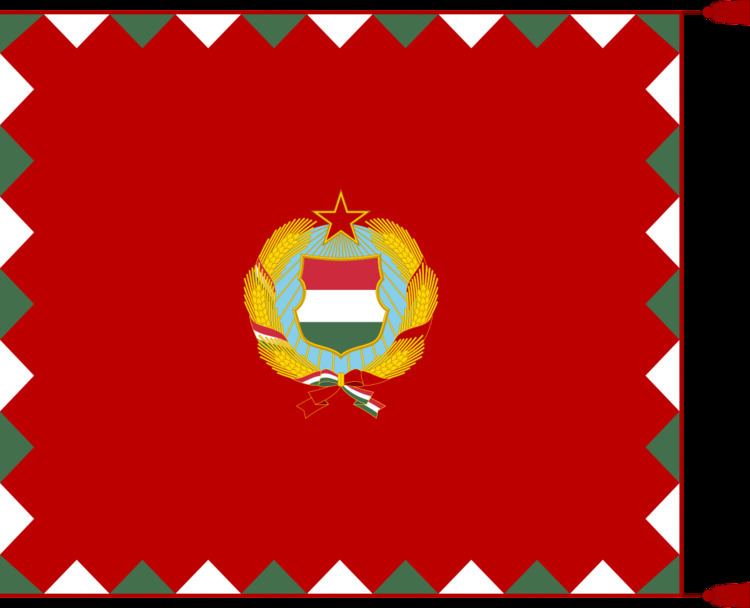Founded 1948 Chief of Staff Laszlo Borsits | Disbanded 1989 | |
 | ||
Service branches Surface ForcesAir Defence Forces | ||
The Hungarian People's Army HPA (Hungarian:Magyar Néphadsereg) was the military of the Hungarian People's Republic from 1948 to 1989. It only saw combat once during its existence, which was assisting the Soviet Union in crushing the Prague Spring. It maintained close ties to the Warsaw Pact along with other Eastern Bloc countries. It dissolved in 1989 and retained its current form through the Hungarian Defence Force.
Contents
History
After the 1948 creation of the HPA the allies and the Soviet Union permitted it to have a 65,000 strong Army and an Air Force with 5,000 personnel an 90 aircraft. The first Minister of Defence Mihály Farkas completely based the HPA off of Stalinism until the death of Joseph Stalin in 1953.The HPA mimicked the Soviet Army's Political commissar model, In which party members could teach the ideas of Marxism–Leninism to soldiers of the HPA. After Stalin's death, De-Stalinizationswept through the HPA quickly leading to the resignation of Farkas as Minister of Defence. In 1956 the Soviet Army invaded Hungary due to the revolutions that were taking place. As a result, the Soviets took away most of the HPA's equipment, and dismantled the Air Force. In 1959 they began rebuilding the HPA and the new Hungarian leader János Kádár, asked for 200,000 Soviet troops from the Southern Group of Forces Regiment to stay in the country, which led to the government to rely more on the Soviets leading to the deterioration of the HPA.In 1968 it joined Soviet troops in invading Czechoslovakia and restoring order in Prague. Out of the mobilised 4 were killed in accidents. Soviet troops relaxed their control during the era of Mikhail Gorbachev, and Hungary later became a Democratic Republic. As it moved on from socialism the HPA was converted into the new model, officially dissolving the HPA and retaining its current form in the Hungarian Defence Force.
Composition
The HPA's manpower by 1989 was approximately 100,000 and about 64,000 were conscripts. It had the smallest amount of aircraft and equipment in the Warsaw Pact. It consisted of the Hungarian Ground Force and the Hungarian Air Force. The ground forces accounted for 77 percent of the HPA.
Organization
The HPA has two branches:
The branches not under the Ministry of Defense were the following:
The combined strength of the HPA in 1989 was 100,000 troops.
Equipment
In the 1950s the Army was equipped with T-34/85 tanks, as well as 68 IS-2s, which were in service between 1950-1956. After the crackdown of the Hungarian Revolution of 1956 all were returned to the Soviet Union.
The Army had 1,200 T-54 and T-55 tanks in 1988.It also had about 100 Soviet made T-72's in its inventory.The HPA's artillery included 225 M-1938 122 mm and 50 M-1943 or D-1 howitzers.It also included 90 2S1 122mm and 20 2S3 152mm self propelled guns.
Military Conscription
Most conscripts were poorly trained, and therefore they were used as a labor forces.All of the conscripts had to go through a few weeks of rifle training before they go into workers branches. During the conscription period opinion towards the HPA became very negative and it caused many young men to make excuses on why they should not be drafted (mainly fake medical excuses).
